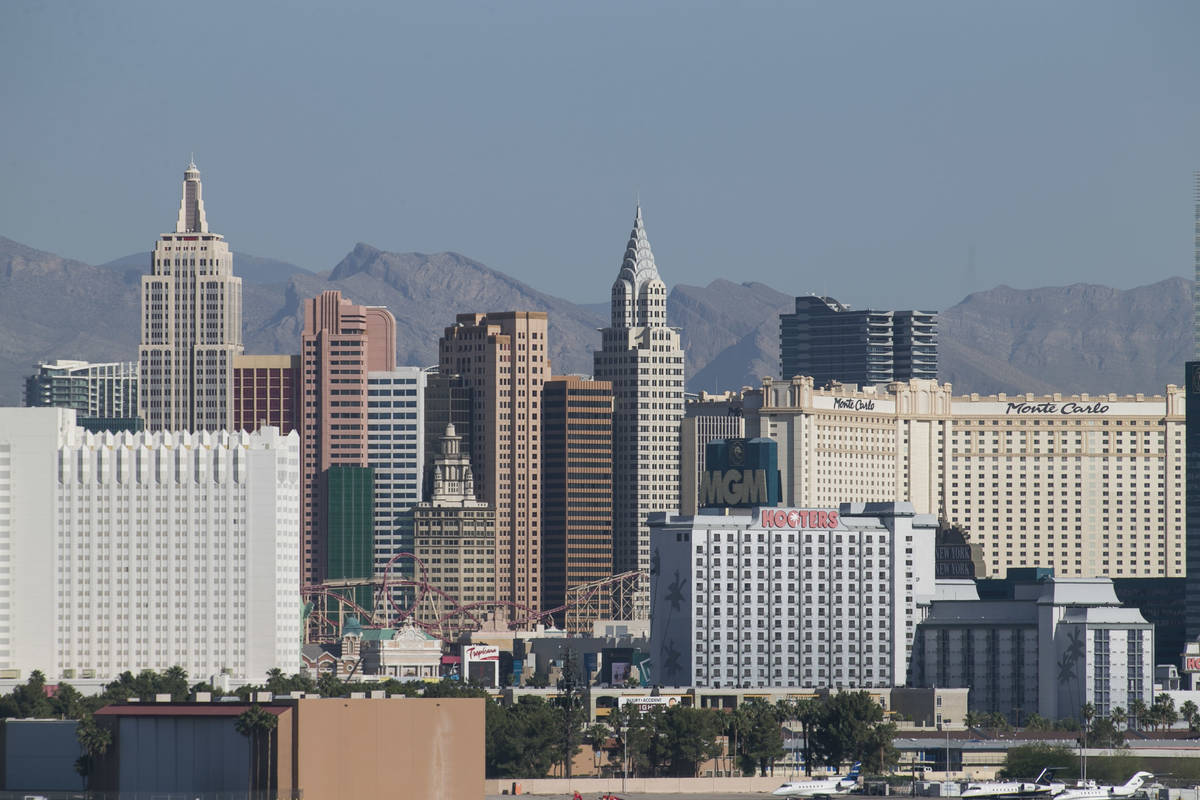Air quality in Las Vegas Valley benefits from fewer vehicles on roads
Air quality in the Las Vegas Valley has improved with fewer motorists on the roads following the closure of the state’s nonessential businesses, according to Clark County officials.
There was a 33 percent decrease in small particulate matter and nitrogen dioxide from February to March, according to data from the county’s Department of Environment and Sustainability released Monday. The decline came after Gov. Steve Sisolak’s stay-at-home initiative closing nonessential businesses on March 20.
“We are seeing reductions in PM2.5 — small particulate matter — and nitrogen dioxide (NO2) when you compare data from the first half of March to the second half,” environment and sustainability meteorologist Paul Fransioli said in a news release. “Data shows about a one-third decrease in those pollutants from February to March.”
The Regional Transportation Commission of Southern Nevada reported that traffic across the valley’s freeways was down 36 percent in March compared with a year earlier. Traffic volume was down 73 percent on Interstate 15 near the Nevada-California line, it said.
“We will continue to see a decline in traffic volume on our valley’s roadways, as our community continues to follow the governor’s directive to stay home for Nevada,” MJ Maynard, the RTC’s CEO, told the Review-Journal last week.
The new air quality data, derived from two air quality monitoring stations — one at Mack Middle School on East Karen Avenue and the other at a near-roadside station monitoring vehicle emissions at Rancho and Teddy drives — shows levels for small particulate matter and nitrogen dioxide decreased March 17-23 compared with March 1-16.
“Both pollutants are considered harmful to health and the environment by the U.S. Environmental Protection Agency,” the news release stated.
According to the EPA, air pollution emitted from the transportation sector (cars, trucks, commercial aircraft and railroads) contributes to smog and poor air quality. The pollutants include particulate matter and nitrogen oxides.
Based on five years of air quality index data, particulate matter, nitrogen dioxide and ozone were all down slightly in March 2020 compared with March in the years 2016-19.
In February there were 16 days with moderate overall air quality, according to the Air Quality Index, compared with one moderate day in March.
More study is required to determine how much the reduced vehicle traffic is affecting the pollutants in the air, but DES officials said the results are consistent with similar air quality findings around the country.
“It’s too early to tell how much impact this will have on ozone this summer,” Fransioli said. “We know for a fact that Clark County’s air quality has been good and improving since before the stay-at-home order. With the exception of wildfire summers, our air quality has steadily improved over the past 15 years or so.”
^
Contact Mick Akers at makers@reviewjournal.com or 702-387-2920. Follow @mickakers on Twitter.



















